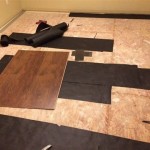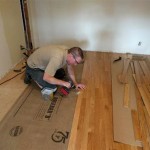```html
The Cost of Radiant Floor Heating: A Comprehensive Overview
Radiant floor heating, a technology that warms a room by convection and radiation, has gained popularity as a comfortable and energy-efficient alternative to traditional forced-air heating systems. While the benefits of radiant floor heating are well-documented, understanding the costs associated with installation and operation is crucial before making an investment. This article provides a detailed analysis of the various cost factors involved, encompassing initial installation expenses, ongoing operational costs, and potential long-term savings.
Initial Installation Costs
The initial investment in radiant floor heating is typically higher than that of conventional systems like furnaces or baseboard heaters. This is primarily due to the complexity of the installation process, which involves embedding heating elements within the floor structure. The specific cost drivers within the initial installation phase include the type of system chosen, the size of the area to be heated, the existing floor construction, labor costs, and supplementary materials.
There are two primary types of radiant floor heating systems: electric and hydronic. Electric systems utilize electrically heated cables or mats embedded in or under the flooring. Hydronic systems, on the other hand, circulate heated water through pipes laid beneath the floor surface. Electric systems tend to have lower upfront material costs, making them attractive for smaller areas or retrofit installations. Hydronic systems, however, generally offer greater long-term energy efficiency, especially for larger areas. The choice between electric and hydronic significantly impacts the overall installation cost.
The square footage of the area to be heated directly influences the amount of materials required, including tubing or heating cables, manifolds (for hydronic systems), and insulation. Larger areas naturally necessitate larger quantities of these materials, resulting in higher costs. Furthermore, the complexity of the floor plan, including the number of rooms and the presence of obstacles, can increase labor hours and therefore installation costs.
The existing floor construction plays a vital role in determining the complexity and cost of the installation. Installing radiant floor heating in new construction is generally less expensive than retrofitting an existing floor. In new construction, the tubing or heating elements can be easily integrated into the floor slab before the flooring is installed. Retrofitting, however, often requires removing existing flooring, preparing the subfloor, and potentially increasing the floor height, all of which adds to the cost. The type of flooring material also affects the installation process. For example, installing radiant heat under tile is often easier and more cost-effective than installing it under hardwood or carpet.
Labor costs constitute a significant portion of the overall installation expense. Hiring qualified and experienced professionals is essential to ensure proper installation and optimal system performance. Labor costs vary depending on geographical location, the complexity of the installation, and the contractor's rates. Obtaining multiple quotes from reputable contractors is highly recommended to ensure a competitive price. Installation of hydronic systems often requires specialized plumbing expertise, which can further increase labor costs.
In addition to the primary system components and labor, supplementary materials such as insulation, manifolds (for hydronic systems), thermostats, and control systems contribute to the overall cost. Insulation is crucial for maximizing energy efficiency by preventing heat loss to the subfloor. Manifolds distribute heated water to different zones in a hydronic system, allowing for individual temperature control in each area. Thermostats regulate the system's operation and ensure the desired temperature is maintained. Smart thermostats, which offer advanced features like remote control and energy monitoring, can add to the initial cost but may offer long-term energy savings.
Operational Costs and Energy Efficiency
While the initial installation cost of radiant floor heating may be higher, the lower operational costs often offset this expense over time. Radiant floor heating systems are generally more energy-efficient than traditional heating systems because they heat the objects and people in a room directly, rather than heating the air. This allows for lower thermostat settings without sacrificing comfort.
The primary operational cost is the energy consumed to heat the water (for hydronic systems) or energize the heating elements (for electric systems). The cost of electricity or natural gas, the primary fuel sources for these systems, varies depending on location and market conditions. The efficiency of the heating system itself also plays a crucial role. High-efficiency boilers, commonly used in hydronic systems, can significantly reduce fuel consumption compared to older, less efficient models.
Heat loss is a major factor affecting the operating cost of any heating system. Proper insulation minimizes heat loss through the floor, walls, and ceiling, reducing the amount of energy required to maintain the desired temperature. Insulating the subfloor beneath the radiant heating system is particularly important to prevent heat loss to the ground. The level of insulation should be appropriate for the climate and the building's construction.
Zoning allows for independent temperature control in different areas of the house. This ensures that only the rooms being used are heated, saving energy and reducing operational costs. Hydronic systems are easily zoned using manifolds and thermostats. Electric systems can also be zoned, but this typically requires separate heating mats or cables for each zone, which may add to the initial installation cost.
The type of flooring material also impacts the energy efficiency of the system. Materials with high thermal conductivity, such as tile and stone, transfer heat efficiently, allowing the system to operate at lower temperatures. Carpeting and wood flooring, on the other hand, have lower thermal conductivity and may require the system to operate at higher temperatures to achieve the same level of comfort. The type of flooring should be considered when designing and operating the radiant floor heating system to optimize energy efficiency.
Programmable thermostats and smart home integration can further reduce operational costs. Programmable thermostats allow users to set different temperature schedules for different times of the day, ensuring that the system is only heating the home when it is occupied. Smart home integration enables remote control of the system, allowing users to adjust the temperature from anywhere using a smartphone or tablet. These features can help to prevent unnecessary energy consumption and lower heating bills.
Long-Term Cost Savings and Benefits
Beyond the operational cost savings, radiant floor heating offers several long-term benefits that contribute to overall cost savings and improved comfort. These include increased energy efficiency, improved air quality, reduced maintenance, and increased property value.
Radiant floor heating systems are typically more energy-efficient than forced-air systems, leading to lower monthly heating bills. This energy efficiency stems from the way radiant heat warms a room. Instead of heating the air, which rises and circulates, radiant heat directly warms the surfaces and objects in the room, creating a more consistent and comfortable temperature. Studies have shown that radiant floor heating can save up to 30% on energy bills compared to traditional forced-air systems. The precise amount of energy savings depends on factors such as the climate, the insulation level of the home, and the efficiency of the heating system.
Forced-air heating systems can circulate dust, allergens, and other pollutants throughout the home, contributing to poor indoor air quality. Radiant floor heating, on the other hand, does not circulate air, minimizing the spread of these irritants. This can be particularly beneficial for individuals with allergies or respiratory problems. The elimination of drafts and air circulation also reduces the drying effect associated with forced-air systems, which can help to maintain comfortable humidity levels in the home.
Radiant floor heating systems require minimal maintenance compared to forced-air systems. There are no filters to change or ducts to clean. Hydronic systems may require occasional inspection and maintenance of the boiler and pump, but these components typically have a long lifespan. Electric systems require even less maintenance, as there are no moving parts. The reduced maintenance requirements translate into lower long-term costs and increased convenience.
Installing radiant floor heating can increase the value of a home. Many buyers are willing to pay a premium for the comfort, energy efficiency, and improved air quality associated with this technology. A well-designed and properly installed radiant floor heating system can be a significant selling point, particularly in colder climates. The increased property value can help to offset the initial installation cost over time.
Ultimately, the total cost of radiant floor heating depends on a variety of factors. A thorough evaluation of the specific needs and circumstances of each project is essential to determine the most cost-effective and energy-efficient solution. By carefully considering the initial installation costs, operational expenses, and long-term benefits, homeowners can make an informed decision about whether radiant floor heating is the right choice for their homes.
```
Radiant Floor Heating Cost To Install Heated Floors Fixr

Radiant Floor Heating Cost To Install Heated Floors Fixr

Radiant Heat In Your Home Is It Worth

The Cost Of Installing A Radiant Floor Heating System

Radiant Floor Heating Cost To Install Heated Floors Fixr

How Much Does Radiant Floor Heating Cost 2025

Is It Worth Installing Radiant In Floor Heating My Home Sun Electrical Ltd

How Much Does Radiant Floor Heating Cost 2025

Full Cost Breakdown Of Our Radiant Floor Propane Use

What Is The Cost Of Radiant Floor Heating
See Also







